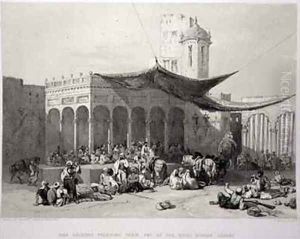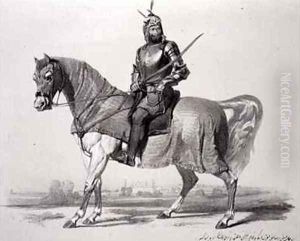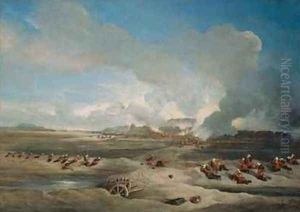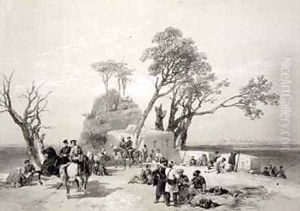Hardinge, Charles Stewart Paintings
Charles Stewart Hardinge, 2nd Viscount Hardinge, was a British artist known for his watercolour landscapes and military scenes. Born on September 2, 1822, in London, England, he was the eldest son of Henry Hardinge, 1st Viscount Hardinge, a prominent British Army officer and politician who served as the Governor-General of India. Though Charles Stewart Hardinge's life was often overshadowed by the military and political achievements of his father, he pursued his passion for art and became a respectable watercolourist in his own right.
Hardinge showed an inclination towards the arts from an early age, but his family's status and the expectations of the time likely pushed him towards a military career initially. He attended the Royal Military College, Sandhurst, and was commissioned into the British Army. However, his true interest lay in painting, and he eventually focused on his artistic pursuits. Hardinge traveled extensively, which allowed him to capture a variety of landscapes and military scenes from across Europe and India, reflecting his personal experiences and the broader Victorian interest in exotic locales.
Despite not being as widely recognized as some of his contemporaries, Hardinge's work did receive attention during his lifetime. He exhibited at the Royal Academy and was associated with the New Watercolour Society, where his works were appreciated for their detail and composition. His paintings often depicted scenes with historical or military significance, which resonated with the Victorian public's fascination with the empire and its military endeavors.
Charles Stewart Hardinge's legacy in the art world is modest compared to the towering political and military legacy of his father. Nevertheless, his paintings remain a testament to his skill as a watercolourist and provide a visual record of the era's military history and landscapes. Hardinge passed away on April 28, 1894, leaving behind a body of work that continues to be of interest to historians and collectors of Victorian art.



